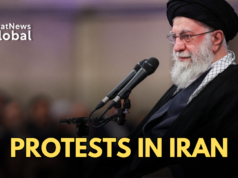As the North Atlantic Treaty Organisation, commonly known as NATO, marked 75 years of its existence, its top diplomats met in Brussels. US Secretary of State Antony Blinken said the grouping was stronger than ever before. The timing is rather awkward, coming in the midst of Russia’s war in Ukraine, a military conflict that’s now into the third year. Despite initial reverses, Russia managed to quickly recover and has come back all guns blazing On the other hand, Ukraine is desperate for aid, in terms of money, arms and ammunition, from its western partners to keep its war machinery going. The West has fallen short when it comes to replenishing Ukraine’s ammunition stocks. A multi-billion dollar package is still stuck in the US Congress As it finds itself against a much stronger enemy, Ukraine is getting aid in bits and pieces, without any concrete assurances from its European partners. The NATO boss says an ad-hoc approach is not the answer. Since its creation in 1949 with 12 members, the transatlantic Alliance now has 32 countries. Its original purpose was to bring peace in Europe after the Second World War. And also to guard against the threat posed by the Soviet Union during the Cold War. But decades later, the war in Afghanistan, the longest, costliest and deadliest in the history of the alliance, was a terrible loss of face. Even today, NATO members don’t agree on whether to arm Ukraine. As an organization, it only provides non-lethal equipment, although many NATO members give arms and ammunition as bilateral support. An attack on one ally is an attack on all, that was the guiding principle on which NATO was formed. So how relevant is the alliance? The answer perhaps lies in which way the war in Ukraine goes.




